For those who need a synopsis to decide whether they have an interest in reading on, I’ll give you this: Tom Doak gave the course a 3 in The Confidential Guide first time around….
…For those who are still with us, I think he was wrong and that this is the finest inland course in Ireland, south of the border anyway…. Or at least the bones of it is. For in Carlow, we have the all too familiar problems of tree planting and greens that have shrunk and been softened.
This course has serious design pedigree, being a Hawtree (F.G.) and Taylor design in 1926 that was remodelled in 1937 by Tom Simpson. It was built on lovely topography on perfect, sandy soil. Whilst I’m not sure we can call it heath (there is no heather), in the open parts of the course it has that wonderful, prairie like feel of native grasses and vegetation. It is ideal golfing country. I’ve yet to track down old photos and so I’m not sure what Simpson added in the detail. He did make various routing changes and those included the introduction of the superlative par-threes at the 6th and 17th… As a set of four, the par-threes are fantastic…
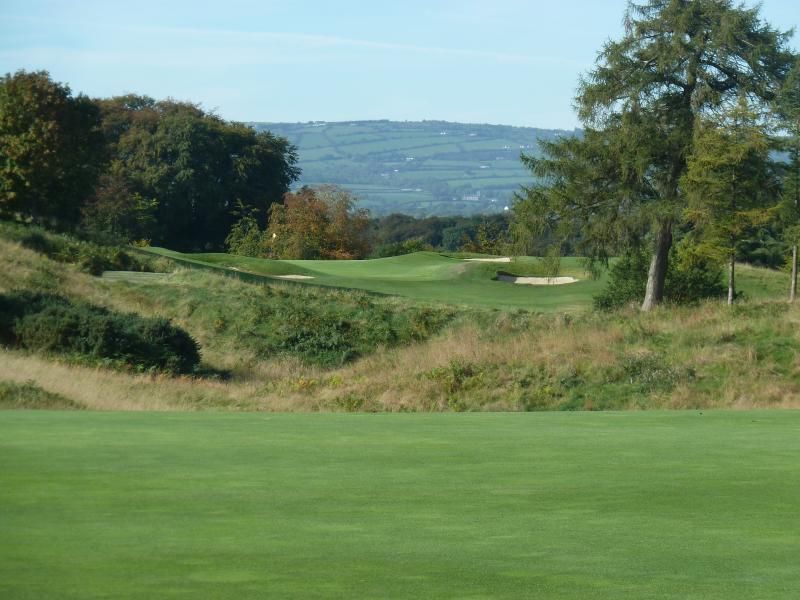
Carlow plays to a very difficult 6,700 yard Par-70 and is host to the midland scratch tournament which has a long history with such noted names as Cecil Ewing, Joe Carr and Peter McEvoy having won it on numerous occasions between them. The tree planting I’m sure came about because the club were trying to tighten up playing lines, worried that the course was going to become too easy for such a big competition (some chance – this is a serious test). It really was misguided and we have clumps of deciduous trees at driving distances to pinch fairways… The last few years have seen a little clearance and a few trees knocked with last winter’s storms… Let us hope they continue in the same direction… The green sites are fantastic but even looking where the pop-ups are placed, it’s clear they have shrunk in recent years (they really are very small making the course even more difficult). It also appears to me that sometime in the further past, some of the greens have been built off the natural grade to reduce slopes and undulation. They are all native soil, push-up constructions. There is definite potential in this area.
The club have little money. They have lost membership and being a distance off the main road south-west, they get few touring golfers stopping on their way to the coast. A new motorway has now been built however (the M9) meaning that the course is only 25 minutes from the main Dublin to Limerick (South-West) road. In this respect, I’d recommend a stop for interested GCA’ers…
The opening hole is a long and excellent par-four with a slightly blind drive.... The second is a short par-four that would have been drivable (290 yards). Here you can see where trees have been planted to tighten up the entrance. In this case, it actually works but it is the green site with a bunker eating in to the back centre that would have always been the tricky part of the hole:
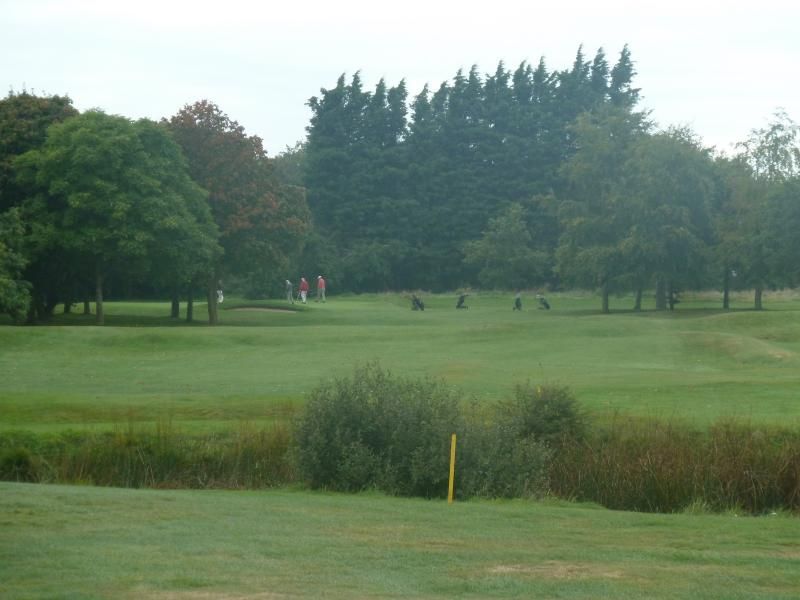
The third hole is a very good par three over broken ground and then the fourth is a par-four with the drive over the plains and the second shot up a significant hill to a severely tilted green. Here you can again see where trees have been planted at driving distance. If the trees on the left were cleared, it would give the native grasses on the hill as a more pleasant and authentic backdrop:
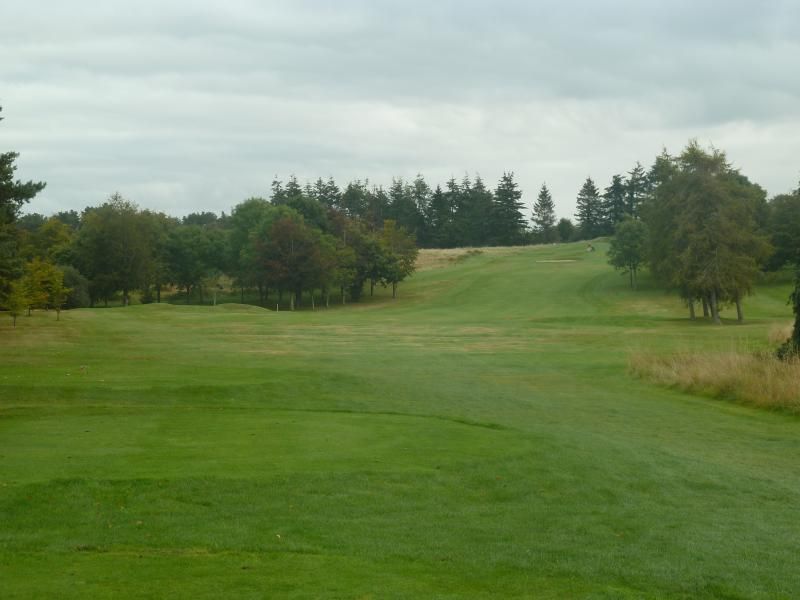
Looking back from behind the 4th green:

The fifth is a cracking par-five rollercoaster over undulating ground with a tricky left to right tee shot on a slightly reverse camber fairway :
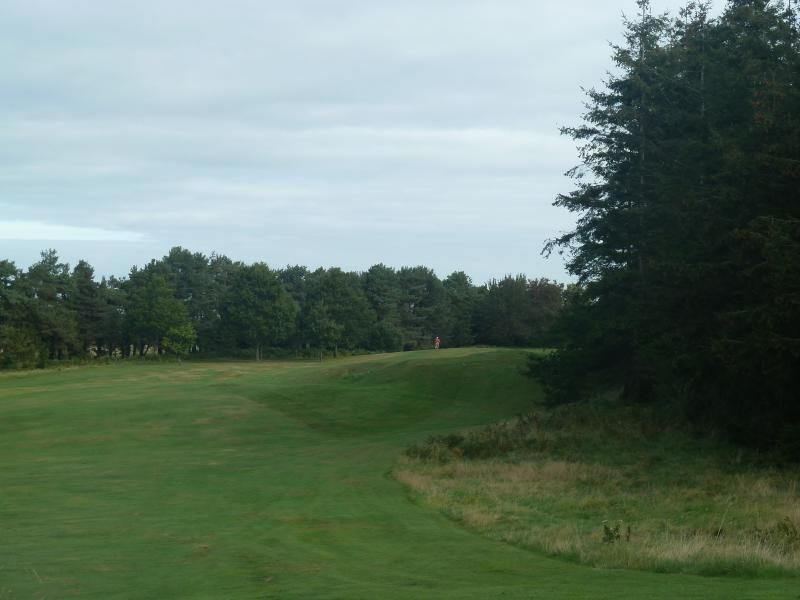
This photo shows the ground movement as approaching the drive. The second is blind unless you get over the far ridge (a long tee shot):
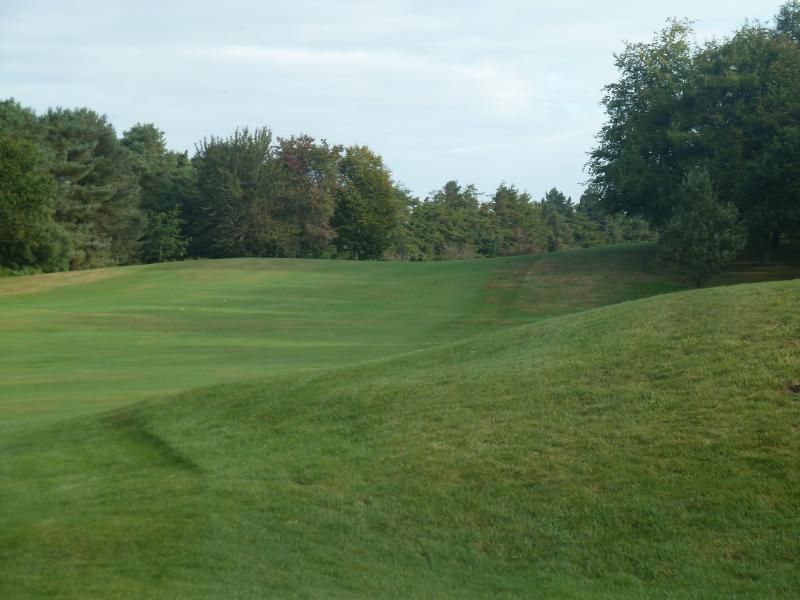
The green sits in a hidden dell, punchbowl like. This pad has been built up on both sides. I imagine this was a great green with lots of movement at one point when the front tied in to its surrounds. The 15th green is in the background:
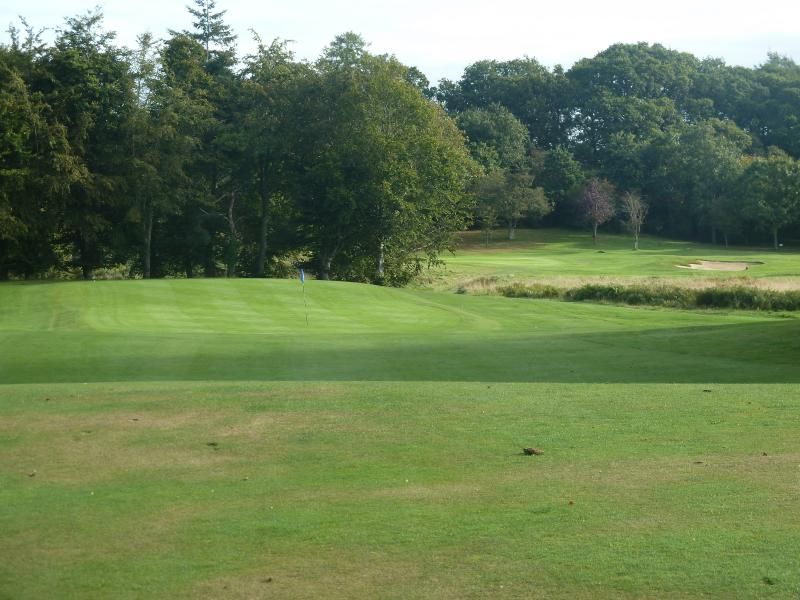
We now move in to the more open part of the course with one of the stars, the Simpson designed par three 6th hole. This plays over land that moves much more than is evident from the photo to an exquisite green site. From the tee:
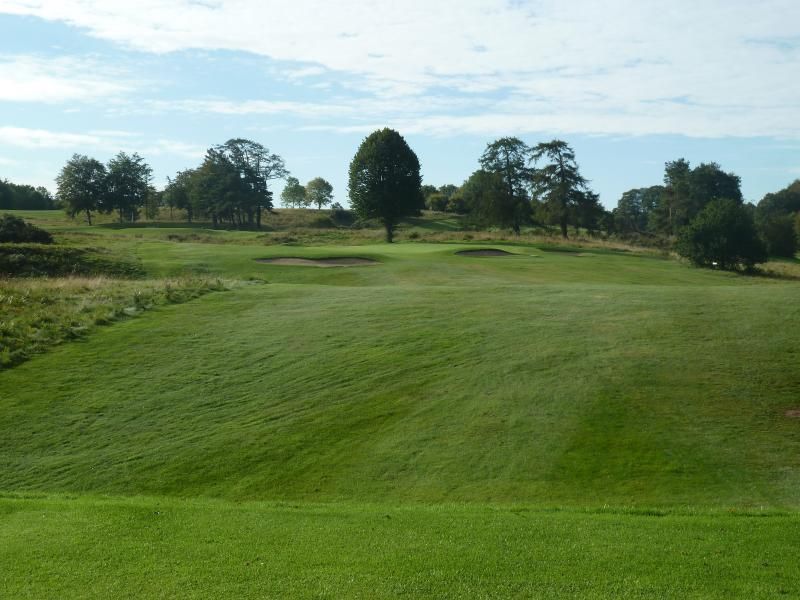
And looking back at the hole from the 17th tee:
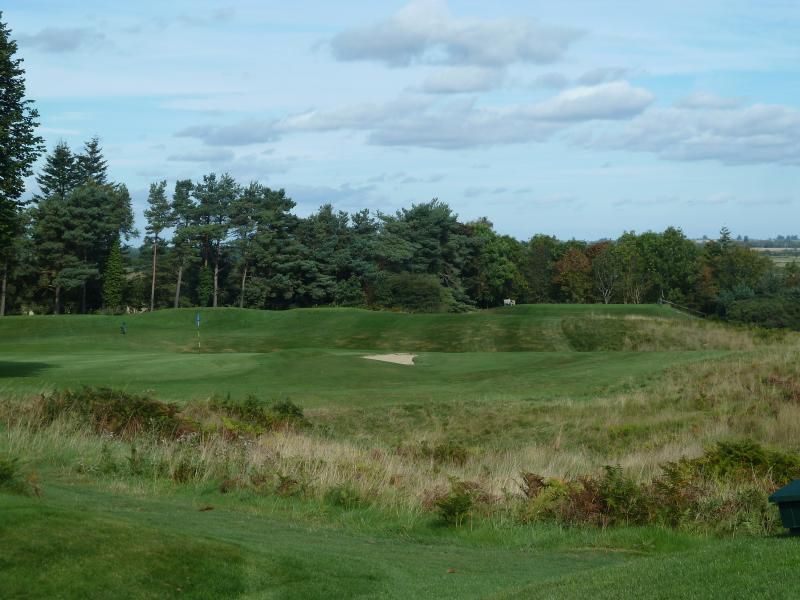
The 7th is an incredibly tough par-4 dogleg to the left. A world class hole that has been muted somewhat by extra tree planting, as can be seen on this photo from the tee:
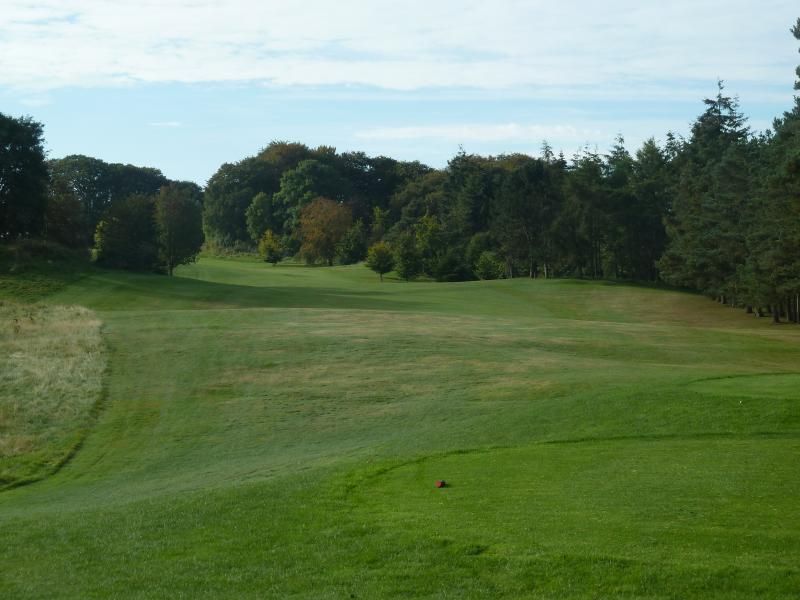
But you get a better idea of the greatness of this hole from the photo below which shows the approach... and the one after which shows the hole from behind the green:
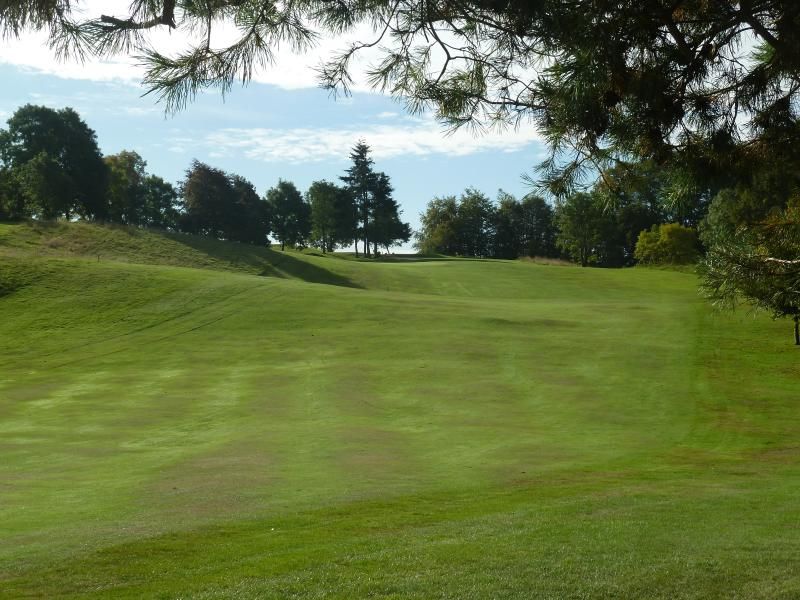

The eight hole is maybe the most photographed, a straightaway par-four where you open the shoulders and watch the ball soar far below. Again, muted by tree planting at the driving distance. But a thrilling tee shot. I was told you could see seven counties from this point. The third green sits behind the 8th in the distance:
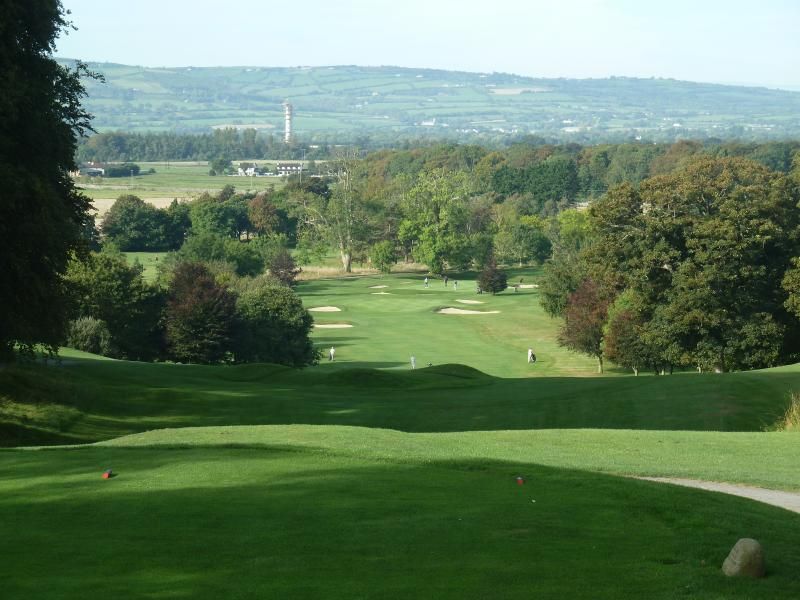
9th returns to the clubhouse via a dogleg right. A small green that may (or may not) have been doubled with the 18th at some point. Here's the approach and then looking back over the subtle ground contours:
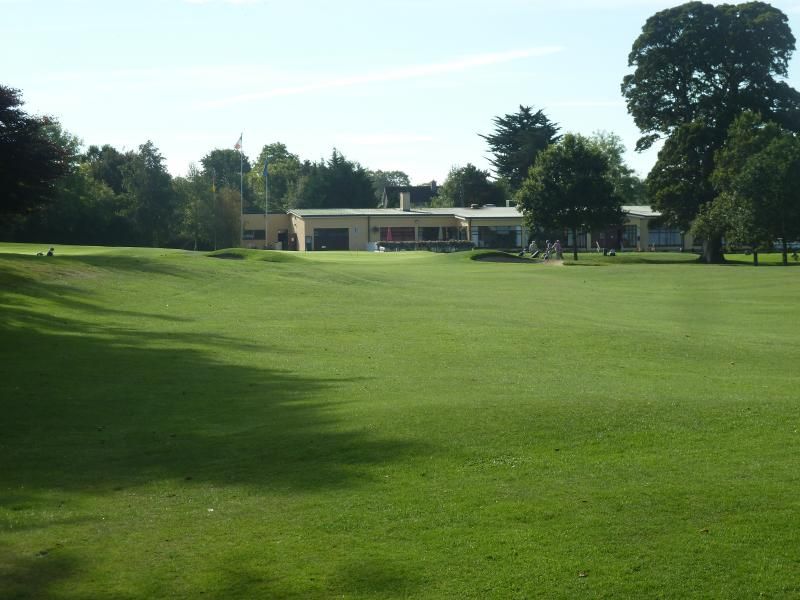
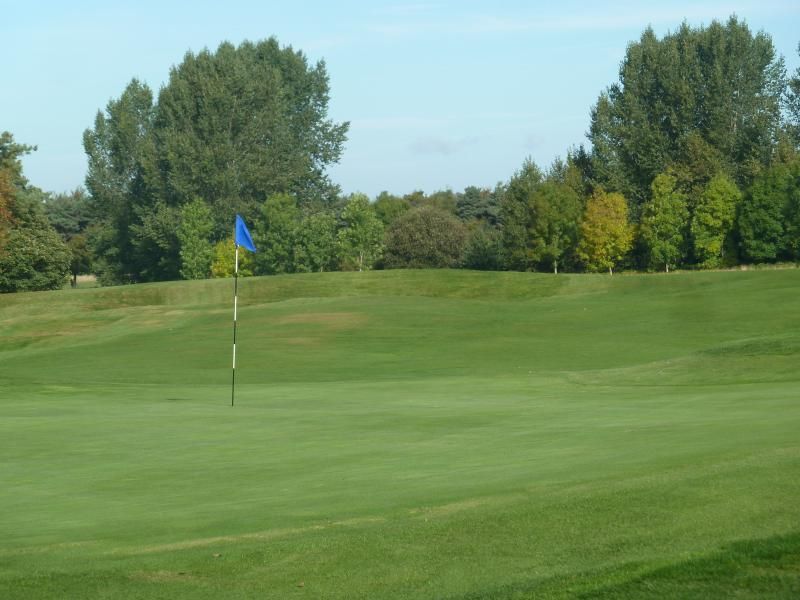
The 10th is a short, drivable par-4, a little out of character and more modern in flavour. The safer tee-shot leaves you with this approach:
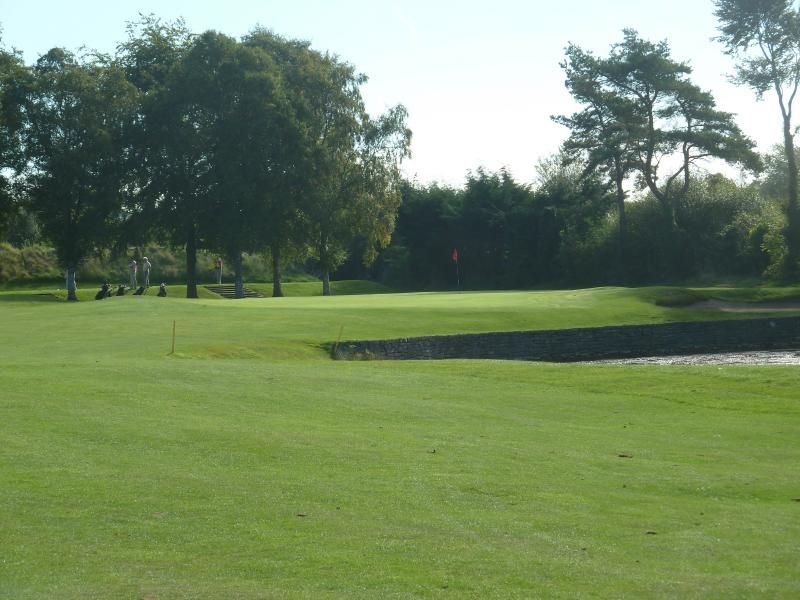
The 11th is a straightaway par-4 up the hill... Nice bunkering before the green and a nice green site that really should be a little more skyline... Tree planting ruined the aesthetic on this hole as well:
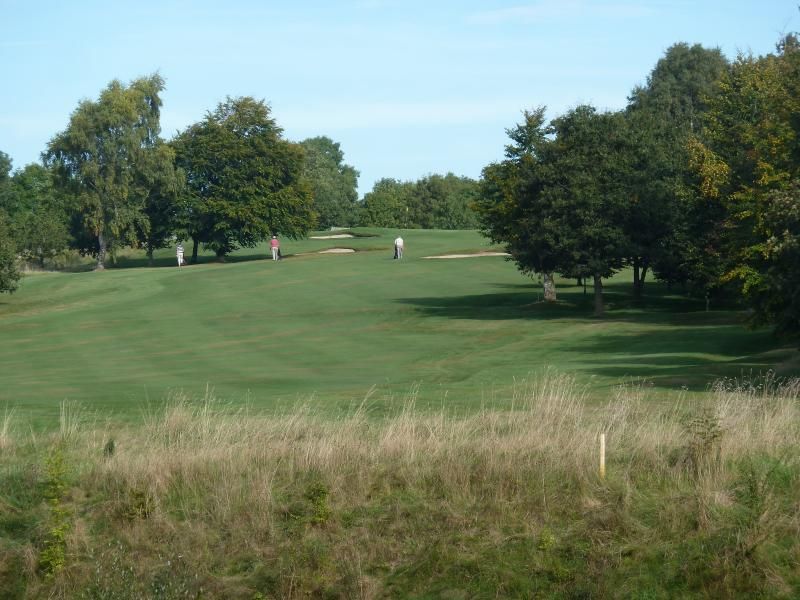
Now this is more like it. The drive on the 12th is semi-blind over the crest of a hill. The approach is first rate to an angled green over a dip from the left. Drive right and you can bump one in along the crest of the ridge. Top quality and an idea of what Carlow could be with some help. Incidentally, the ground game is in full swing at Carlow:
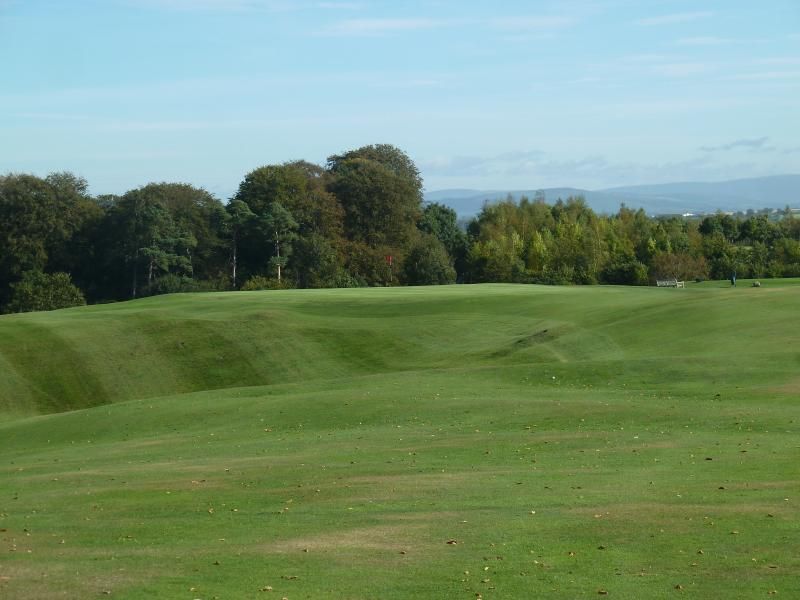
The 13th is another excellent par-three. Cross-slope returning on the other side of that ridge we just approached the 12th from. Another good green site:

And the 14th is perhaps the toughest two shotter on the course. A very attractive tee shot to the crux of a sharpish dogleg left with the fairway pushing you right. You are left with this long approach:
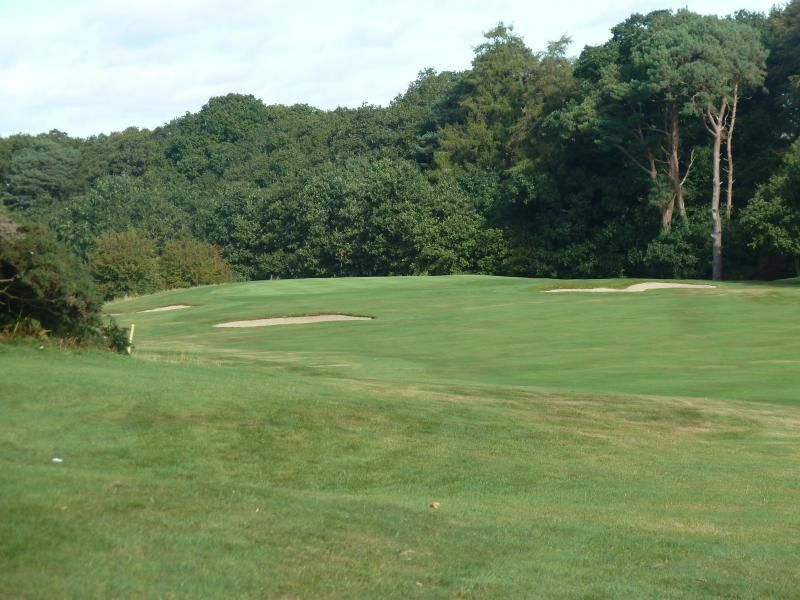
Note the way the green is a little bit of an upturned saucer. Difficult to hold with some serious run-offs, especially left. Here is the left side of the green as seen from the 6th tee:
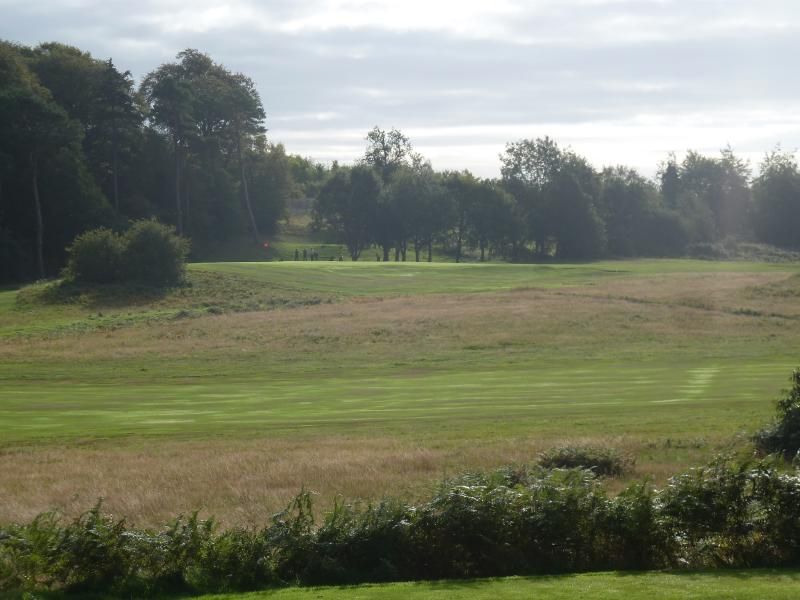
The 15th is an attractive drive and pitch hole in to the corner of the property:
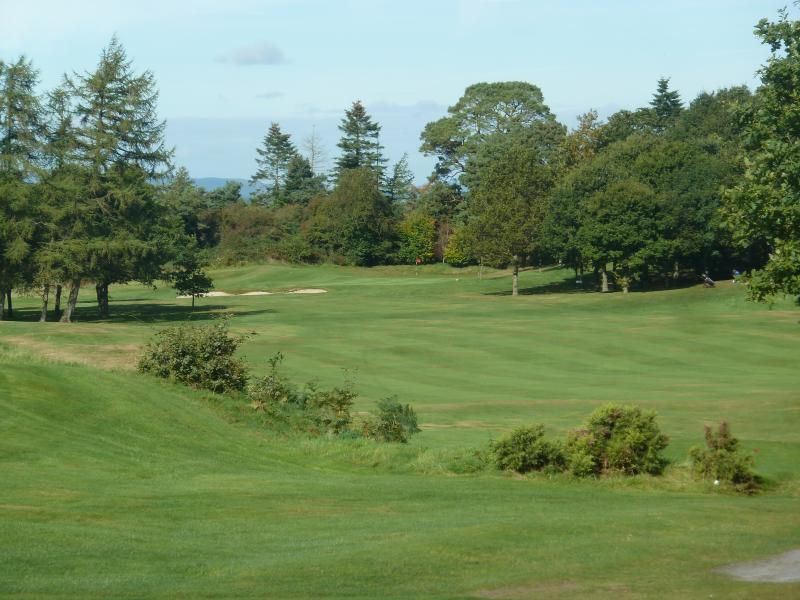
And then the 16th and 17th can be best described as two of the best holes in Ireland, the former a beautiful, long par-four over cracking ground to the green site in the distance. Please get rid of those trees at driving distance though:
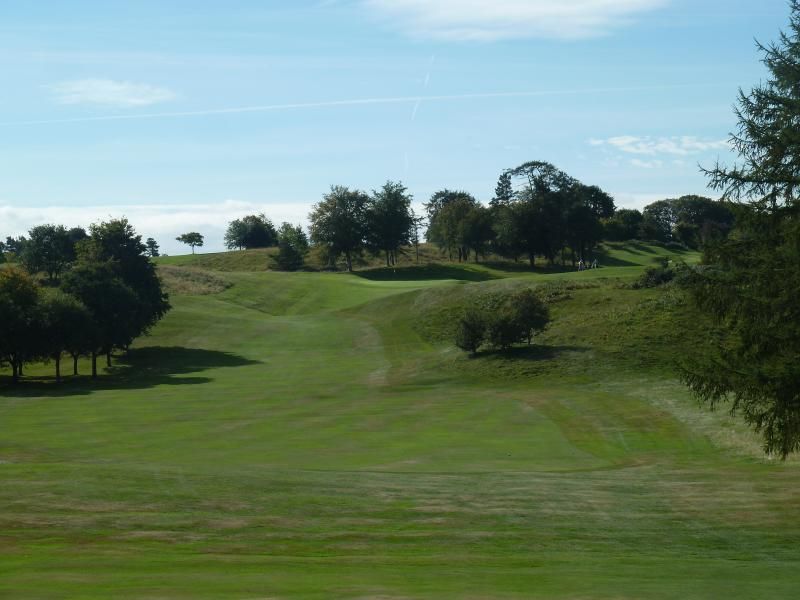
And Simpson's 17th being a 150 yard nob to nob par-three to a small green, beautifully bunkered and with a run-off to the back. Treacherous:
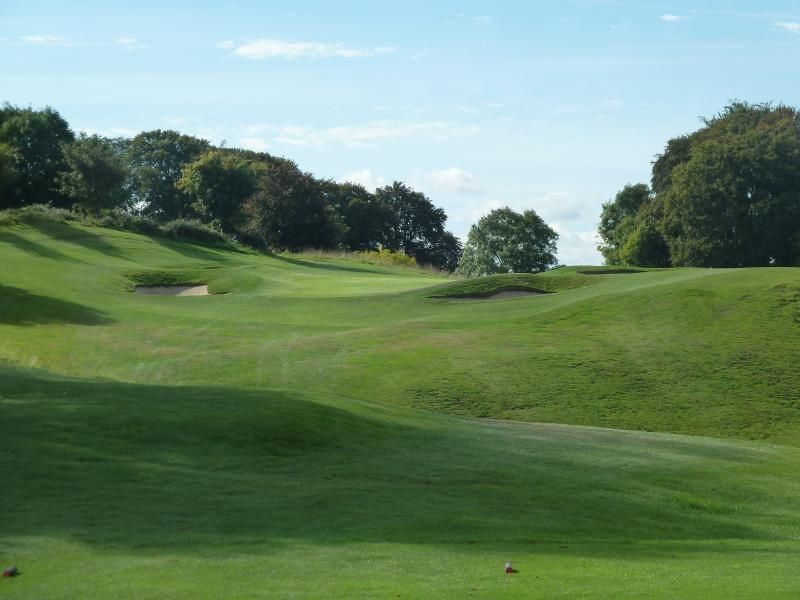
We finish with a dramatic tee-shot from the same hill as the 8th. A par-five sweeping left to an excellent finishing green in front of the clubhouse. More tree planting gone astray here but a larger green that shows the potential of what the rest of the course could be:
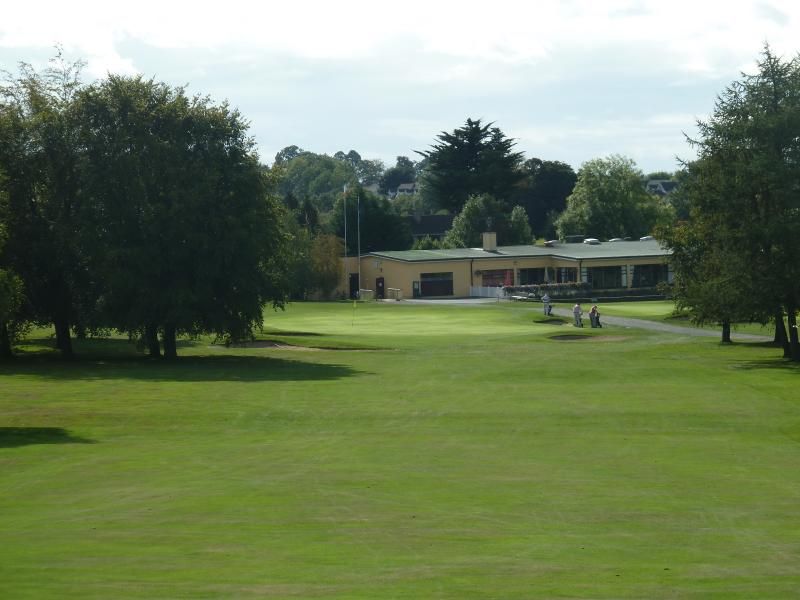
It had been a few years since I visited Carlow and it is clear to me that the course could do with some loving design attention. But the skeleton of this course really is a cracker. It was playing firm, browned out, better than most heathlands in turf quality. If an astute GCA'er is willing to try something different on their way to ticking off the big names on the coast, it is now not too far off the beaten path... Jump in and give it a try.